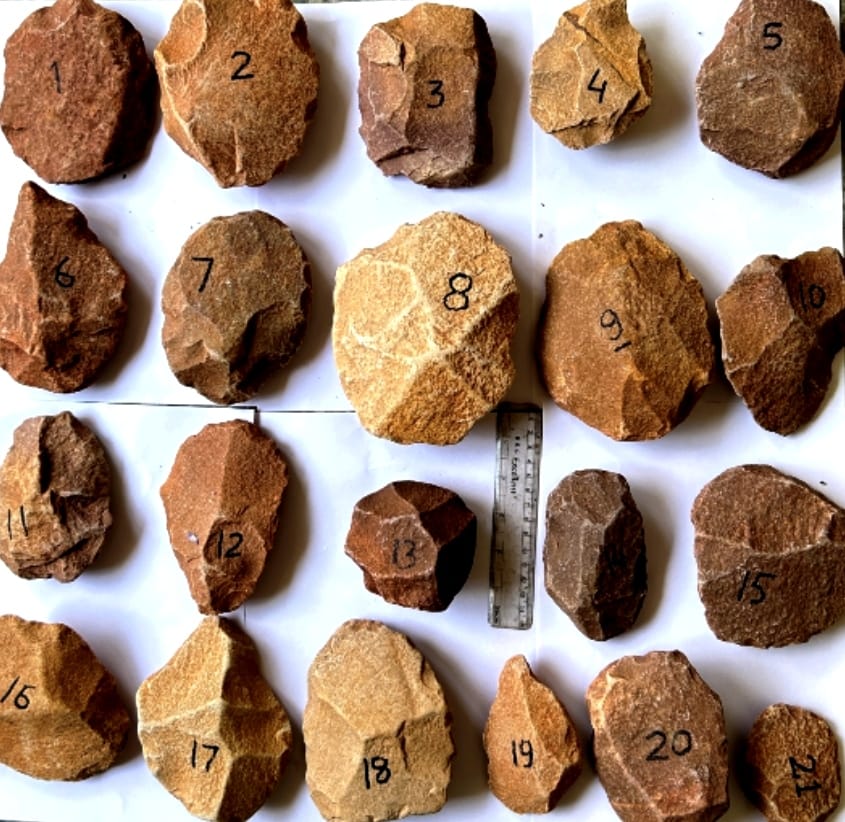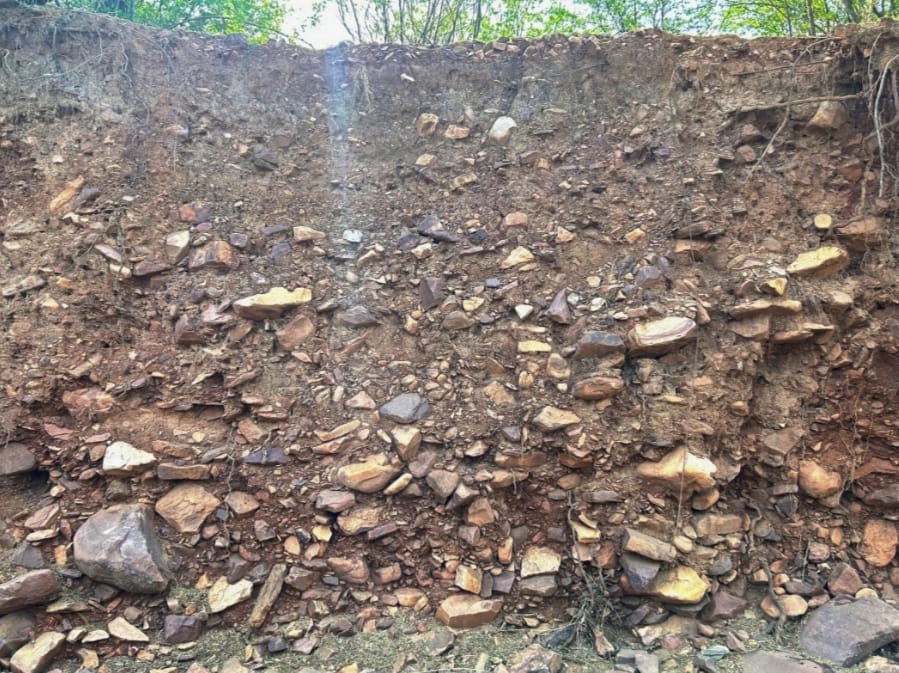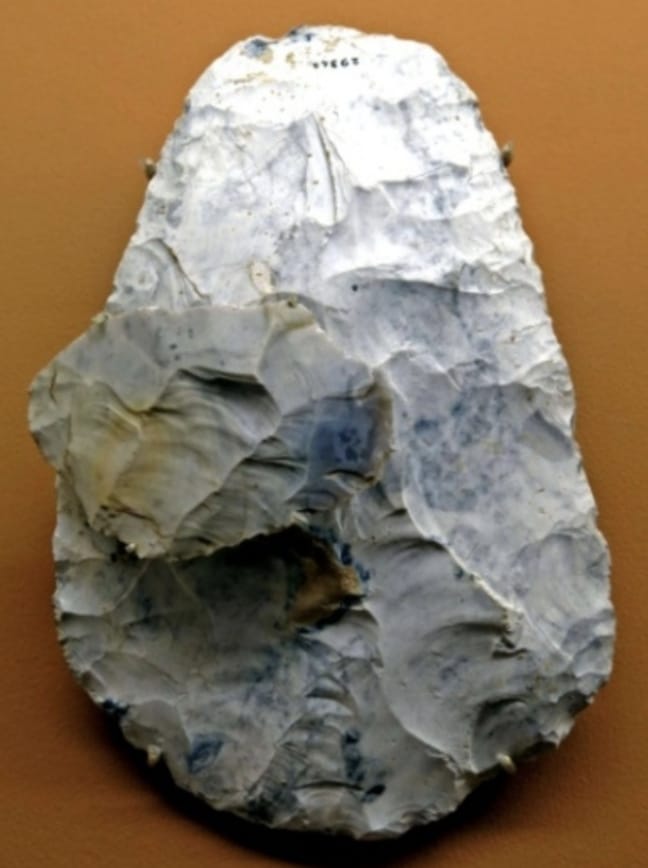
Dr Lalit Pandey, Retired Professor (Archeology) and Convener of INTACH Chapter, Udaipur
Dr Vinod Agrawal, Retired Professor (Geology) and Life Member of INTACH Chapter, Udaipur
Dr Hemant Sen, Project Fellow, Department of Geology, M.L. Sukhadia University, Udaipur
Mr Om Prakash Sharma “Kukki”, Bundi, Rajasthan
Tools in Stone Age:
Stone tools are the oldest surviving type of tool made by humans and our ancestors to meet their needs. Stone tools are the only preserved archaeological remains of prehistoric man. The Stone Age indicates the large swathe of time during which stone was widely used to make implements. So far, the first stone tools have been dated to roughly 2.6 million years ago. The Stone Age is conceived to consist of:

Early Palaeolithic begins with the first evidence of stone (also known as lithic) technology, which has so far been dated to around 2.6 million years ago and stems from sites in Ethiopia. Two industries (style) are recognised in this period, namely the Oldowan and the Acheulean. The earliest stone tools in the era of the genus Homo which represents from termed the Oldowan Industry, are named after the type of site found in Olduvai Gorge, Tanzania, where they were discovered in large quantities. se early tools were simple, usually made with one or a few flakes chipped off with another stone and a simple core. Oldowan tools (Figure 1) were used during the Lower Paleolithic period, 2.6 million years ago up until at least 1.7 million years ago, by ancient Hominins (early humans). This technological industry was followed by the more sophisticated Acheulean Industry. Acheulean (c. 1.7 million years ago to c. 250,000 years ago and named after St. Acheul in France), tools were produced during the Lower Palaeolithic era across Africa and much of West Asia, South Asia, East Asia and Europe, and are typically found in Homo erectus remains. It is characterized by the development of tools into new shapes i.e. large bifaces like hand axes, picks, cleavers and knives. se bifaces (two working surfaces on two sides) were made from large flakes that were struck from boulder cores or larger cobbles and nodules (Figure 2).
In the Middle Palaeolithic time, humans became more advanced and were extra careful in the preparation of the tools (Levallois technique). During this time sharp-edged flake tools from a block of stone (core) were produced (Figure 3). In the Late Palaeolithic time, huge creation occurs and blade tools of stone were created. Further, there was a shift from stone to artefacts made from materials such as bone, antler and ivory. Needles and points were made out of this non-lithic stuff
From the Mesolithic age, we get Microliths. These are very small tools (1 cm to 8 cm) made from flint or chart and are often geometrical in shape like a trapezoid, lunate, microlith points, microlith blades, scraper, choppers etc. (Figure 5). From the Neolithic age, we get remarkable polished tools, arrows and spearheads, blades, polished stone axe, adze, hammers and chisels etc.

Stone Age Tools from Hadoti Region
Though Stone Age tools are found all across India and scattered over the mountain valleys and various geographical locations. Among them, Attirampakkam (Tamil Nadu) and Bhilwara and Bundi districts (Rajasthan) are the two places in India where the oldest stone tools have been reported.
Archaeologists have reported a large number of late Acheulian, Middle Palaeolithic and Microlithic tools from different sites in the Hadoti region covering the Bhilwara and Bundi districts. The Stone Age tools are generally found within the terrace of the valleys and dried-up beds of streams (Nalas). In most cases, the use of locally available compact sandstone has been used in making the Stone Age implements. In our recent field visit, we recovered tools from the Astoli Ka Nala site.
Ascoli Ka Nala (25025’44” N: 75034’27” E)
This site is located 7 km west of Bundi city, near the village Astoli. This site is considered the most gifted site for the availability of Stone Age tools in the region. Here the Stone Age tools have been recovered associated with the unconsolidated gravels and pebbles, lying within the terraces and dried-up beds (Figures 7 to 11) of first-order streams (Nalas). During the traverses, a total of 21 Stone Age tools of different types were recovered from this site
(a) Hand axes:
A hand axe is a stone tool of the Lower (early) and Middle Paleolithic Stone Age. It was bifacial (with two wide sides or faces) and held in the hand, not with a handle like a modern axe (Figures 13 and 14). It is made from stone that has been "reduced" and shaped from a larger piece by knapping, or hitting against another stone. Hand axe tools were possibly used to butcher animals, dig for tubers and water, chop wood and remove tree bark, throw at prey etc.
At the Astoli Ka Nala site, we found hand axes of various sizes and shapes. The collected tools, however, did not show natural sharp edges and are also slightly worn because these tools have been affected by weathering and rolling. The following types of hand axes have been recovered from the site.
(b) Core:
A core is a stone from which one or more flakes have been removed from them to create a sharpened edge that could be used for cutting, chopping or scraping. At the Astoli Ka Nala site, we also found core tools of various sizes and shapes
Concluding Remarks:
It has been observed that the recovered tools were made from the locally available compact sandstone which geologically belongs to the Bundi Hill Sandstone Formation of the Upper Vindhyan Supergroup (Neoproterozoic). These tools (especially hand axes) are showing early Acheulian characters, thus indicating that the early men flourished for a very long time (for at least more than 2,00,000 years) in this region.
It is worth mansion here that this particular archaeological heritage site is unknown to the local people. They are generally using boulders and gravels (comprising the tools also) in making ballast and in construction work. The local administration and the Archaeological Survey of India (ASI) are not providing any protection at this site, causing the diminution of this valuable heritage.